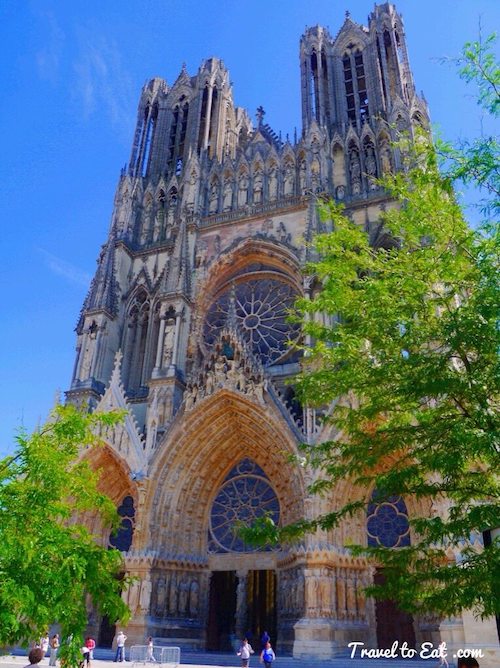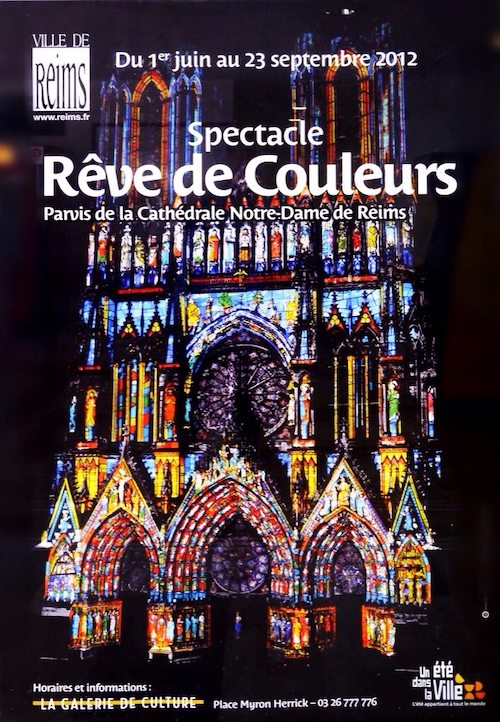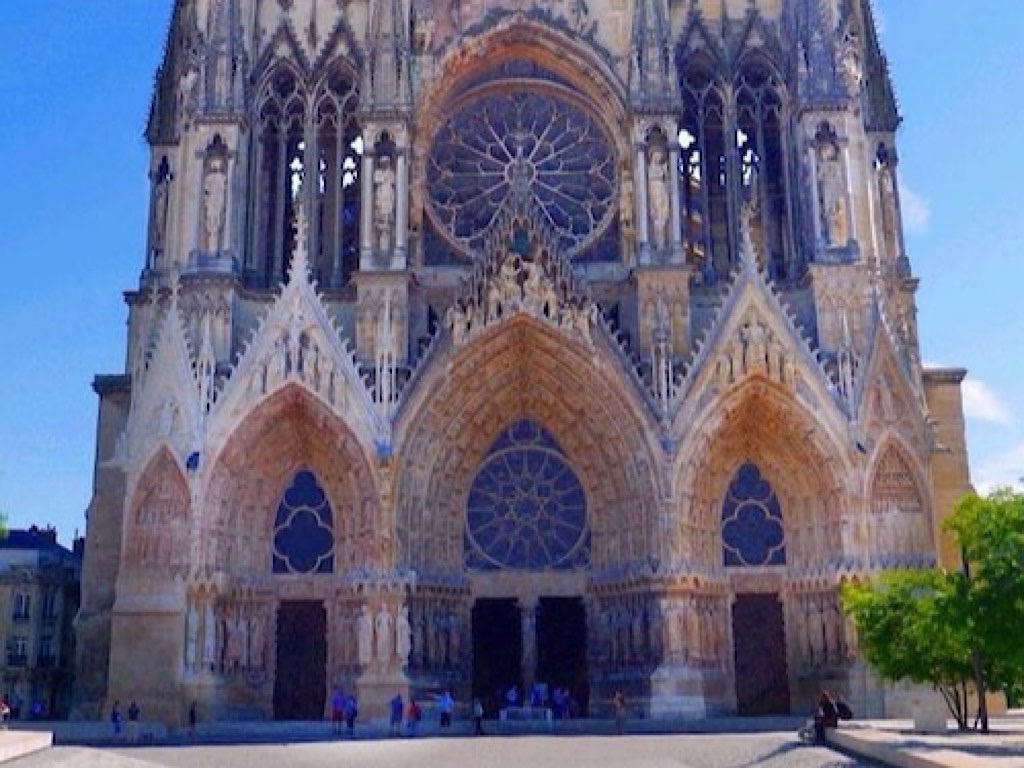
We visited Reims last summer to visit the cathedral and to just look around. Unfortunately I never got around to posting the pictures so I thought I would do it now. Notre-Dame de Reims (Our Lady of Reims) is the seat of the Archdiocese of Reims, where the kings of France were crowned. The cathedral replaced an older church, destroyed by fire in 1211, that was built on the site of the basilica where Clovis was baptized by Saint Remi, bishop of Reims, in AD 496. The outstanding handling of new architectural techniques in the 13th century, and the harmonious marriage of sculptural decoration with architecture, has made Notre-Dame in Reims one of the masterpieces of Gothic art. The former abbey still has its beautiful 9th-century nave, in which lie the remains of Archbishop St Rémi (440–533), who instituted the Holy Anointing of the kings of France. The former archiepiscopal palace known as the Tau Palace, which played an important role in religious ceremonies, was almost entirely rebuilt in the 17th century.


The western facade has three portals but is unusual in that the tympanum (the area between the lintel and pointed top of the portal) is not filled with the normal statuary groups but instead has stained glass. The tympanum sculptures are relocated to the gables above the voussoirs.





The central portal shows a Coronation of the Virgin in the gable. The north portal of the west façade has a Crucifixion scene in the gable while the south portal has an image of Christ at the Last Judgment in the gable, flanked by angels carrying instruments of the Passion. The five bands of voussoirs of the central portal show a Tree of Jesse and angels. The Tree of Jesse is the family tree of Jesus. Depictions of the Jesse Tree are based on a passage from the Book of Isaiah. “And there shall come forth a rod out of the stem of Jesse, and a Branch shall grow out of his roots” (King James Version). In the New Testament the lineage of Jesus is traced by two of the Gospel writers, Matthew in descending order, and Luke in ascending order. Luke's Gospel's description in chapter 3 begins with Jesus himself and is traced all the way back, via Nathan to David and then on to “Adam, which was [the son] of God.”. (Luke 3:23-38) Matthew's Gospel opens with the words: “The book of the generation of Jesus Christ, the son of David, the son of Abraham.” (Matthew 1:1) With this beginning, Matthew shows the Abrahamic and royal descent, passing through David, but then through Solomon.




The Virgin and Child are shown on the trumeau of the central portal. Here the jamb sculptures also date from a variety of eras, and are arranged in pairs, similar to the west façade at Amiens. The right side shows the Annunciation and Visitation, while the left shows the Presentation in the Temple with Joseph and Mary's maidservant. Here the jamb sculptures also date from a variety of eras, and are arranged in pairs, similar to the west façade at Amiens. The right side shows the Annunciation and Visitation, while the left shows the Presentation in the Temple with Joseph and Mary's maidservant. The Visitation pair, with their heavy, crinkled drapery are from an earlier phase of construction and correspond more with the highly classicized figures of the north transept jambs. The figure of St. Elizabeth is especially notable for her individualized expression which shows a weariness and age that indicates a renewed interest in observation of facial types in nature.

The figures on the right of the south portal of the west facade are probably the earliest sculpture from the program that began after the great fire of 1210. From the inside out they depict Simeon, John the Baptist, Isaiah, Moses, Abraham, and Aaron. They are distinctly similar to jamb sculptures of the central portal on the north transept of Chartres Cathedral, with their elongated poses and deeply cut fluid drapery that mark the start of the classicizing trend of the mid-thirteenth century.


The north portal of the west façade has a Crucifixion scene in the gable. The five bands of voussoirs depict scenes from the Life and Passion of Christ. The lintel shows the Conversion of Saul. The jamb figures are mostly unidentified. The man flanked by two angels on the left is thought to be St. Dionysius, and the woman on the right is thought to be St. Helena. These figures are all in the graceful, fluid style of later Reims sculpture, sometimes referred to as the “beautiful” style. The outer buttress relief depicts Helena's discovery of the True Cross.









During the Hundred Years' War the cathedral was under siege by the English from 1359 to 1360. After it fell the English held Reims and the Cathedral until 1429 when it was liberated by Joan of Arc which allowed the Dauphin Charles to be crowned king on July 17, 1429. German shellfire during the opening engagements of the First World War on September 20,1914 burned, damaged and destroyed important parts of the cathedral. Scaffolding around the north tower caught fire, spreading the blaze to all parts of the carpentry superstructure. The lead of the roofs melted and poured through the stone gargoyles, destroying in turn the bishop's palace. Images of the cathedral in ruins were used during the war as propaganda images by the French against the Germans and their deliberate destruction of buildings rich in national and cultural heritage. Restoration work began in 1919, under the direction of Henri Deneux, a native of Reims and chief architect of the Monuments Historiques; the cathedral was fully reopened in 1938, thanks in part to financial support from the Rockefellers, but work has been steadily going on since.

If you are considering a visit to Reims, you should know that they light it up at night during the summer with a spectacular light show. Unfortunately we did not know and did not get to see it in person. Reims is a beautiful city, the Cathedral alone is reason enough to visit and it is only about two hours from Paris by train. Also it is in the champagne region and you can bring back something nice to drink while you remember your trip.
[mappress mapid=”12″]
References:
Website: http://www.reims-cathedral.culture.fr
Notre-Dame de Reims: http://mappinggothic.org/building/1044

